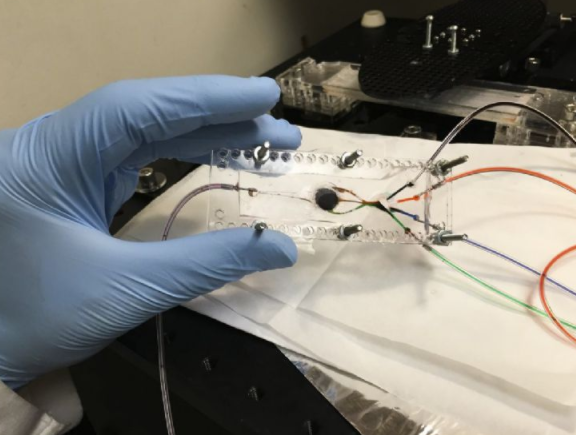Human tissue is an amazing natural thing, but the artificial tissue synthesized by the scientific community for surgery has not been able to reproduce its subtleties. Fortunately, with the advancement of 3D printing light curing (SLA) technology, progress from a single material to a variety of materials. Will reproduce the precise structure of the human body.
According to reports, the University of California, Los Angeles (UCLA) research team has developed a special 3D printer that can use a variety of materials to make therapeutic biomaterials. It is an important milestone in the medical field, and it is expected to print precise products in response to patient requirements in the future. Artificial tissue for organ transplantation and other surgical procedures.

The UCLA research team uses light-curing with 3D printing technology to reproduce sophisticated biocompatible structures using a variety of materials. Ali Khademhosseini, the head of the study, said that human tissue has an extremely precise structure and that in order for human tissue to function smoothly, precise human tissue must be reproduced.
The custom printer designed by Khademhosseini mainly consists of two special components. One is a custom microfluidic chip, which is similar in size to a computer chip. It contains several micro-channels, which respectively "print" different materials, and the second is digital micro- The mirror contains more than one million micromirrors, each of which moves independently.
This technology uses a hydrogel to construct a tissue-printed scaffold that introduces light into the print surface and the illuminated area is the approximate printed outline. Light also causes the material to form molecular bonds, which is the key to hydrogel curing. Once the printing is complete, the micromirror changes the mode of the light to present a new layer of printed outline.
This is the first time in the scientific community that a variety of materials have been used for automated photocuring bioprinting. Traditional photocuring printing uses only a single material, so this is a major advancement in photocurable printing.
The research team first tried to print simple shapes, such as cones, and then mimicked muscle tissue and skeletal muscles to connect tissues, print more complex 3D structures, and even successfully print tumors with vascular networks, which can be used as a biological model for cancer research. The tissue printed by the team will be implanted into the test mouse for testing.
Fancy Usb Flash Drive,Pvc Usb Stick With Logo,Stock Usb Flash Drive,Usb Flash Drive Features,custom PVC USB flash drive
Shenzhen Konchang Electronic Technology Co.,Ltd , https://www.konchang.com